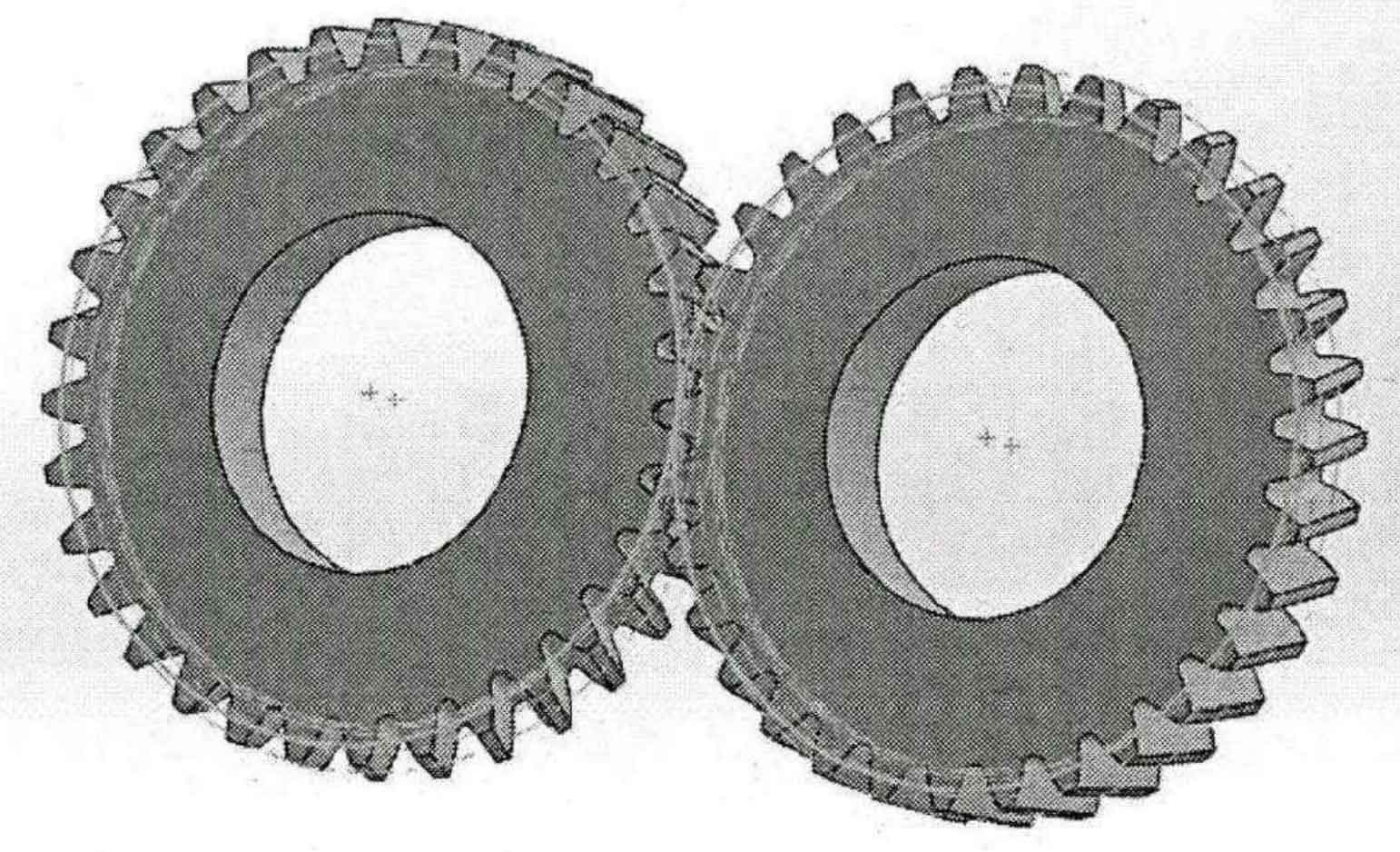Tooth friction is the main factor affecting the vibration noise and power loss of helical gear transmission system. It will not only accelerate the initiation of early faults such as wear, pitting, cracks, etc. of helical gears, affect the dynamic characteristics of transmission system, but also have an important impact on the meshing efficiency of helical gears. Helical gears are widely used in industry. It is important to study the friction excitation of helical gears to improve the service life and meshing efficiency of helical gears.

The length of contact line is the main factor affecting the friction excitation of tooth surface. In the process of helical gear transmission, due to the alternate contact of the meshing tooth pairs, helix angle and other reasons, the length of the contact line changes all the time, and the time-varying of the contact line will cause changes in the meshing stiffness, friction and friction torque. In the research on the contact line length of helical gears, Kar C et al. calculated the multiple contact lines of helical gears engaged at the same time separately and expressed them in the form of piecewise functions. On this basis, the calculation methods of friction force, friction torque, tooth surface engagement force and bearing force of helical gears were studied, but this algorithm is only applicable to the end face contact ratio of 1< εα < 2. Total coincidence 2< ε < 3 has certain limitations. Li Wenliang et al., aiming at the problem of calculation conditions in the contact line algorithm proposed by Kar C et al., deduced a general calculation method for the number of contact lines and the length of contact lines under different coincidence degrees through the relationship criterion between tooth width and meshing surface width, which is more complex. By establishing the geometric model of helical gear pair with eccentric error, Liu Wen et al. studied the calculation method of helical gear friction excitation under the influence of eccentric error, and used the average value to replace the time-varying friction factor in the calculation.
Tooth friction has an important influence on the fatigue life and dynamic characteristics of helical gears. Scholars at home and abroad have done a lot of research work. By introducing friction factor into the contact strength calculation formula, Shen Wei et al. studied the influence of tooth surface friction on the contact fatigue strength of helical gears. The results showed that the tooth surface friction could cause the tooth surface contact stress to increase by about 6%. Lund ⁃⁃⁃⁃⁃⁃⁃⁃⁃⁃⁃⁃⁃⁃⁃ O et al. studied the influence of tooth surface friction on the transmission characteristics of helical gears by establishing a flexible friction contact model of spur gears. The results show that the influence of tooth profile modification on transmission error is no longer significant after considering the friction. Feng Haisheng et al. studied the impact of variable working conditions on the dynamic characteristics of helical gear transmission system. The research shows that the sliding friction coefficient has an important influence on the node impact of helical gear tangential friction. In most of the above studies, the friction coefficient is calculated by constant friction coefficient or semi empirical formula.
(1) The effect of friction will cause the change of meshing force on the tooth surface, and the calculated total meshing force of the tooth surface after considering friction is less than the normal force. From the parameter analysis, it can be seen that the total meshing force on the tooth surface increases with the increase of rotating speed, decreases with the increase of tooth surface roughness and lubricating oil viscosity, and has a significant impact in the multi tooth meshing area.
(2) Time-varying contact line has an important influence on friction excitation. According to the parameter analysis, when the tooth width is 60 mm and the helix angle is 13 °, the axial coincidence is close to 1, the fluctuation of contact line is small, and the fluctuation of the meshing force on the tooth surface is also small; With the increase of tooth width and helix angle, the fluctuation of contact line and meshing force on tooth surface increases. It can be seen that reasonable parameter optimization can effectively reduce the friction excitation of helical gears.
(3) Under the action of time-varying friction coefficient, the meshing efficiency of helical gears increases with the increase of rotating speed; The meshing efficiency increases with the increase of torque. Tooth surface roughness and lubricating oil viscosity have great influence on meshing efficiency, and the meshing efficiency decreases with the increase of tooth surface roughness, especially when the viscosity of low-temperature lubricating oil is large.
In the process of helical gear meshing, the power loss caused by sliding friction and rolling friction between tooth surfaces leads to the reduction of meshing efficiency. Friction loss is directly related to friction coefficient. In most studies, the friction factor is calculated by average value, and the influence of tooth surface condition and lubrication cannot be considered. Based on the analysis of the sliding friction variation law of helical gear meshing tooth surface, the calculation algorithm of friction and friction torque based on time-varying contact line length is derived; Based on the time-varying friction coefficient model, the influence of working parameters and geometric parameters on the meshing force and meshing efficiency of helical gear tooth surface is studied and analyzed. Because sliding friction is the main part of helical gear friction loss, this paper only considers the influence of sliding friction on meshing efficiency.
